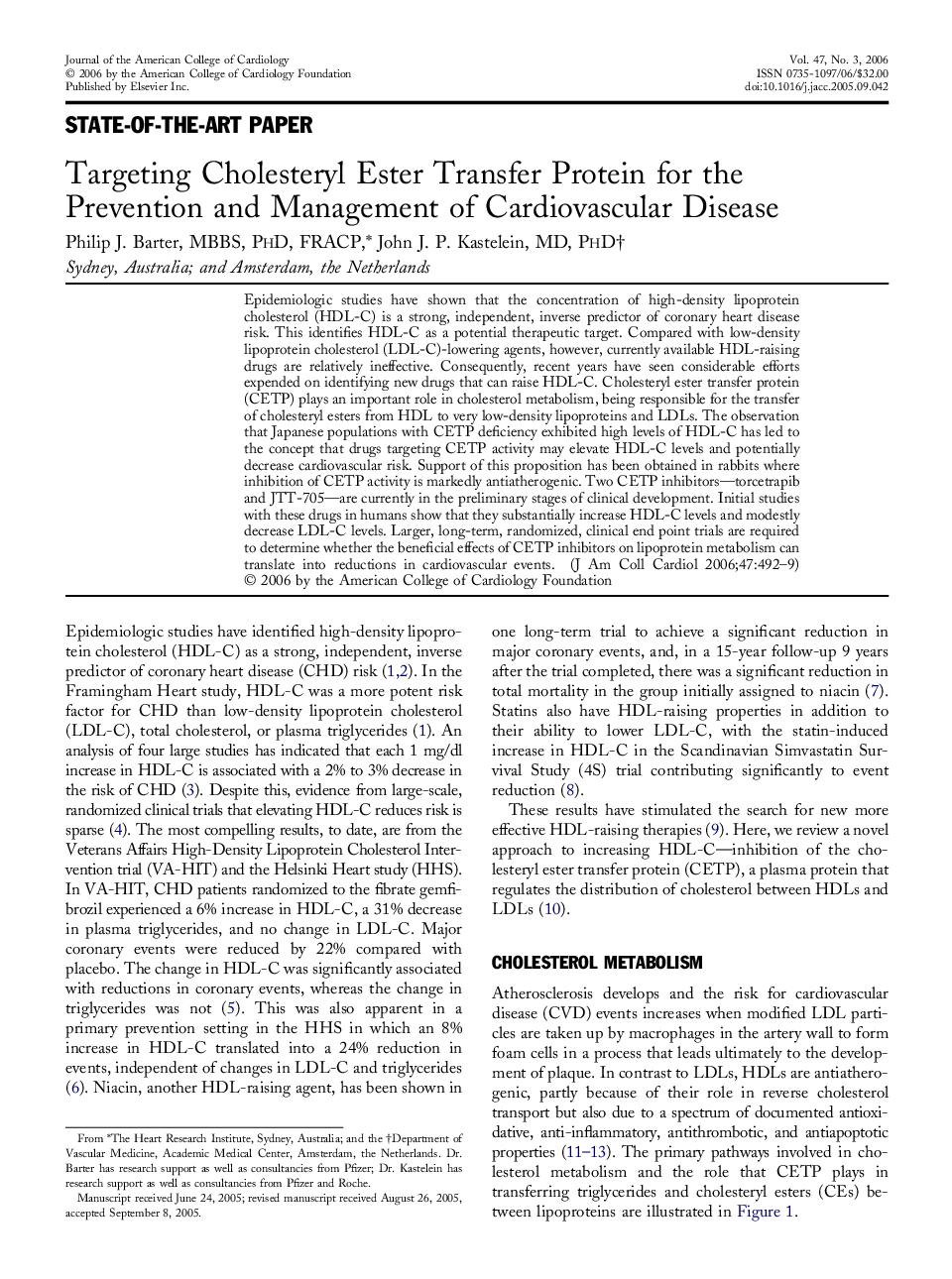| Article ID | Journal | Published Year | Pages | File Type |
|---|---|---|---|---|
| 2955486 | Journal of the American College of Cardiology | 2006 | 8 Pages |
Epidemiologic studies have shown that the concentration of high-density lipoprotein cholesterol (HDL-C) is a strong, independent, inverse predictor of coronary heart disease risk. This identifies HDL-C as a potential therapeutic target. Compared with low-density lipoprotein cholesterol (LDL-C)-lowering agents, however, currently available HDL-raising drugs are relatively ineffective. Consequently, recent years have seen considerable efforts expended on identifying new drugs that can raise HDL-C. Cholesteryl ester transfer protein (CETP) plays an important role in cholesterol metabolism, being responsible for the transfer of cholesteryl esters from HDL to very low-density lipoproteins and LDLs. The observation that Japanese populations with CETP deficiency exhibited high levels of HDL-C has led to the concept that drugs targeting CETP activity may elevate HDL-C levels and potentially decrease cardiovascular risk. Support of this proposition has been obtained in rabbits where inhibition of CETP activity is markedly antiatherogenic. Two CETP inhibitors—torcetrapib and JTT-705—are currently in the preliminary stages of clinical development. Initial studies with these drugs in humans show that they substantially increase HDL-C levels and modestly decrease LDL-C levels. Larger, long-term, randomized, clinical end point trials are required to determine whether the beneficial effects of CETP inhibitors on lipoprotein metabolism can translate into reductions in cardiovascular events.
